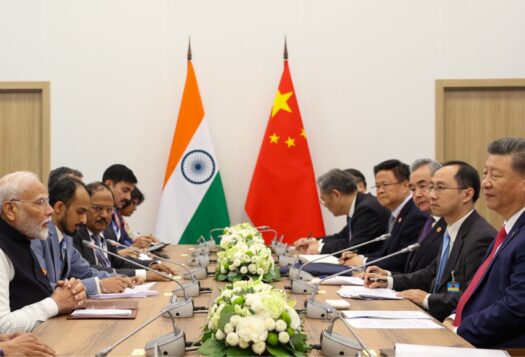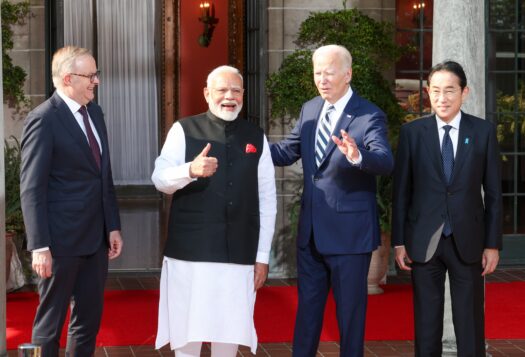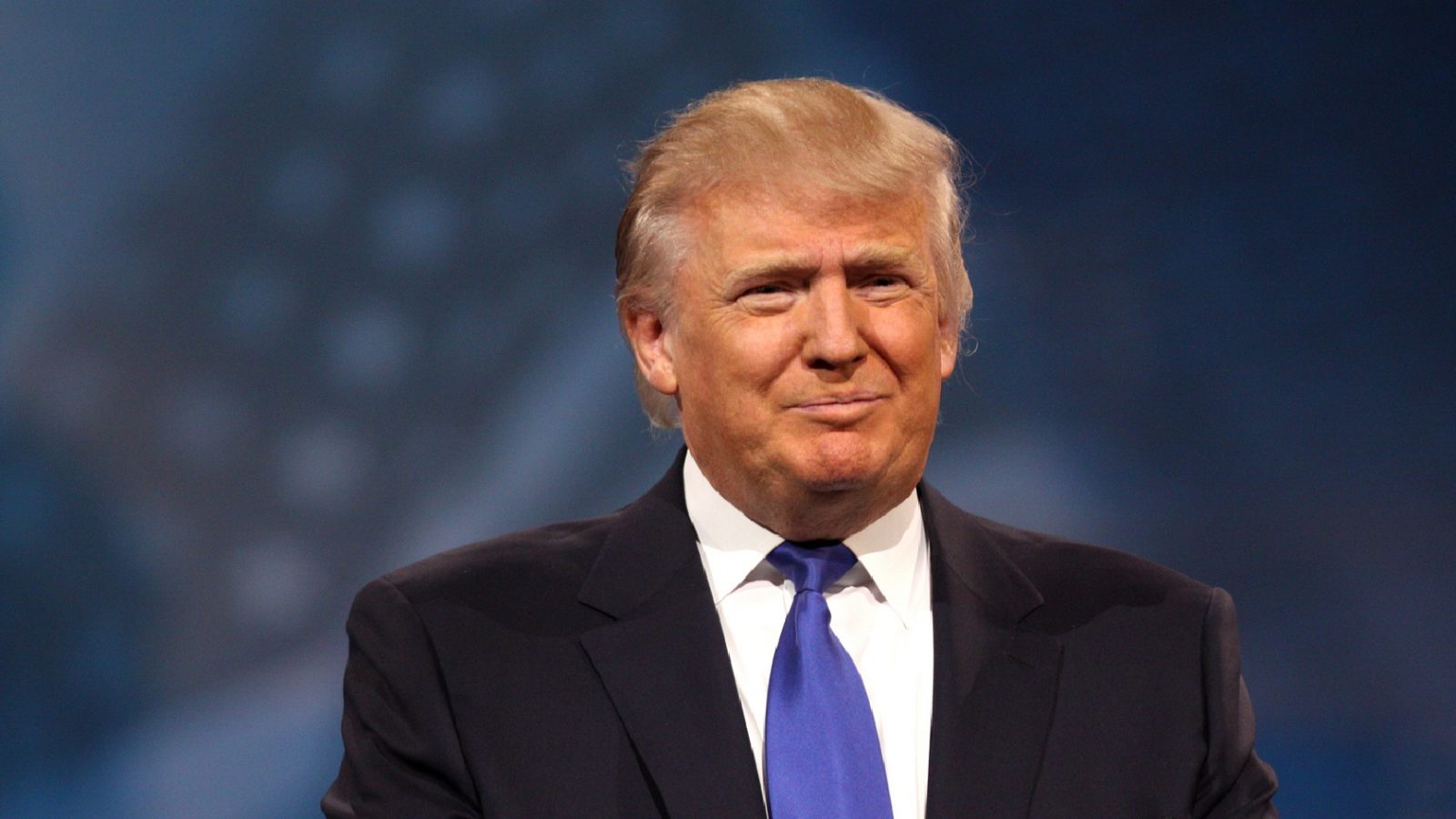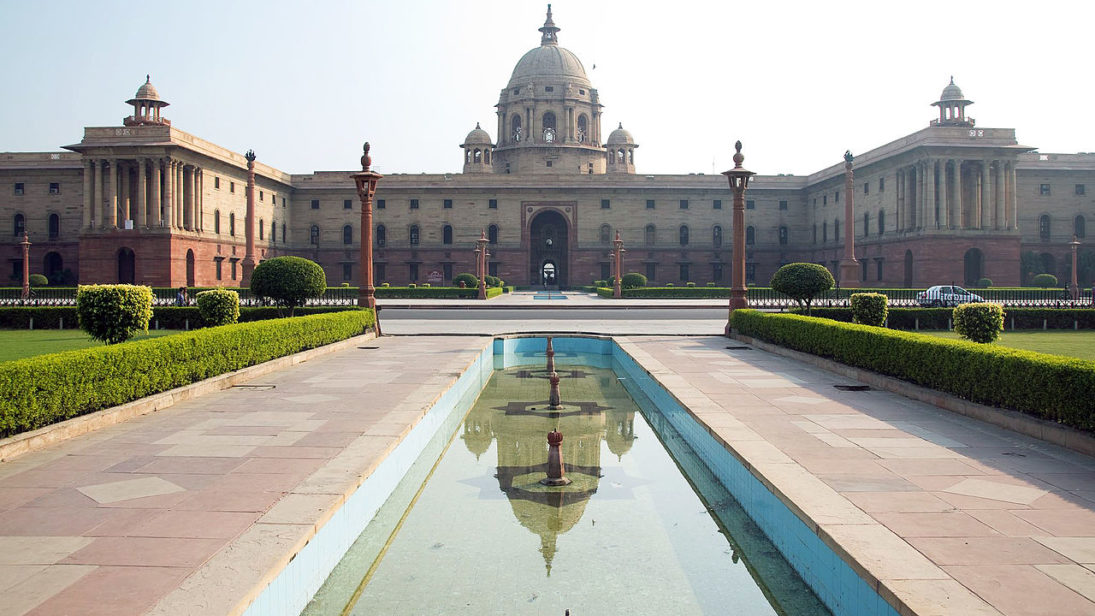
Following the Taliban’s sudden takeover in Afghanistan in August, India closed its five diplomatic missions in the country. However, this was a rare exception to India’s recent trend of expanding its diplomatic network in South Asia.
Our ongoing research finds that over the last 20 years, India opened or reopened thirteen new consulates in seven of its eight immediate neighboring countries (excluding China). This means that since 2001, India has opened approximately twice as many new missions in the region as it did in the previous fifty years altogether.
These new consulates and other missions are the most visible aspect of India’s subnational footprint across the region, going beyond traditional embassies or high commissions situated in capital cities. Located in second-tier cities or peripheral regions, often in the neighbor’s borderlands, these smaller missions spearhead the widening reach of India’s subnational engagements in South Asia. India’s new consulates reflect the country’s expanding interests in the region, dealing with an increasingly large set of subnational entities in neighboring countries, including local or provincial authorities, minority groups, and economic actors.
A Growing Subnational Footprint
Much attention has been given to the domestic sources of Indian foreign policy, including the role of regional states and other subnational entities such as business houses, the media, and religious or migrant communities. But the reverse aspect has been less studied: how does Indian foreign policy operate to engage subnational entities abroad? What role do India’s diplomatic missions play in this outreach beyond capital cities?
Reflecting their size and diversity, many of India’s neighbors have federal or decentralized constitutions that endow their provinces or districts with significant governance autonomy. India’s consulates (or assistant high commissions, as in the cases of fellow Commonwealth countries) play a critical role in engaging these subnational entities.
Since 2001, India has opened approximately twice as many new missions in the region as it did in the previous fifty years altogether.
To assess the historical trends in India’s subnational diplomatic network in South Asia, we surveyed annual reports published by India’s Ministry of External Affairs (MEA) since 1948, websites of Indian diplomatic missions, and media reports. We also interviewed retired and serving officers of the Indian Foreign Service.
Including the five missions that were temporarily suspended in Afghanistan, India currently operates 24 diplomatic representations in eight of its nine immediate neighboring countries (except China). In the last twenty years, India opened, upgraded or reopened thirteen consulates in the neighborhood.
The ten new consulates include Herat and Mazar-e-Sharif in Afghanistan (2002), Birgunj in Nepal (2004), Phuentsholing in Bhutan (upgraded in 2006), Jaffna and Hambantota in Sri Lanka (2010), and Sittwe in Myanmar (2014). The latest openings took place in 2018-2019 in Bangladesh, with two new assistant high commissions in Sylhet and Khulna. One more consulate has recently been approved for Addu, in the Southern part of the Maldives (2021).
In addition to these ten new consulates, India re-opened three more. In Afghanistan, Kandahar and Jalalabad were reactivated in 2002, after closing during the first period of the Taliban rule. In Myanmar, in line with promoting its Eastern geoeconomic reorientation, India reopened its consulate in Mandalay (2002), which had been closed since 1979.
Today, India’s subnational missions play different roles that complement the embassies or high commissions located in capital cities. Functions range from economic diplomacy to political outreach, and from cultural affairs to technical assistance and development cooperation. We identify three significant roles—economic diplomacy, development, and community engagement—that give India’s neighborhood policy a focused subnational dimension.
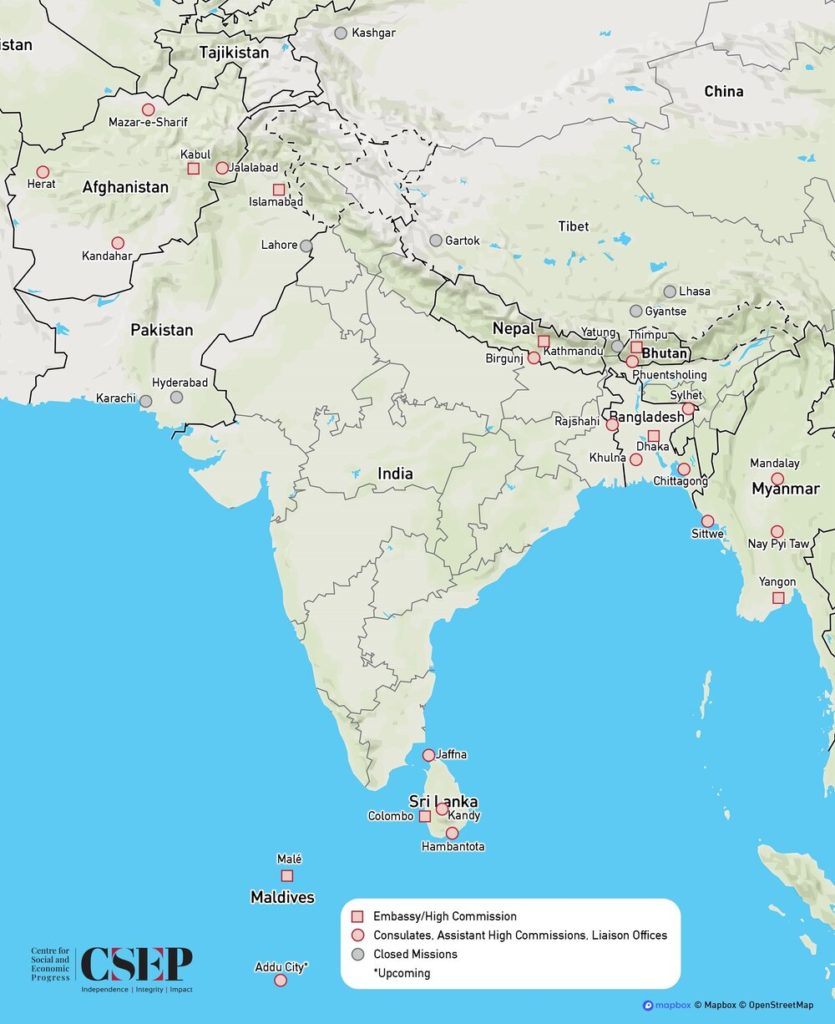
Economic Diplomacy and Cross-Border Connectivity
First, India’s consulates play an increasingly important role in its economic diplomacy, focusing on fostering connectivity and interdependence in South Asia. The consulates help promote trade and passenger movement across land borders and also support Indian companies involved in cross-border infrastructure projects.
For example, the consulate in Birgunj, in southern Nepal, supports Indian companies building infrastructure for the Nepali government, including new cross-border check posts, roads, railways and pipelines that are deepening economic and transportation links between both countries. Located near the border check post where 45 percent of total bilateral trade took place last year, the mission also helps ensure smooth commercial relations, assisting exporters and importers in overcoming difficulties in transit. Similarly, the consulate in Phuentsholing is located near an important border trade point, which oversees 75 percent of bilateral trade with Bhutan.
The importance of India’s consulates in implementing the regional connectivity strategy is particularly visible in Bangladesh and Myanmar, in line with India’s “Act East” policy. These new missions in the borderlands of Bangladesh and Myanmar are fleshing out the geoeconomic transformation of “East South Asia” to connect with Southeast Asia. The missions in Khulna and Sylhet, for example, oversee the implementation of new inland waterways protocols, as well as new rail and road routes via Bangladesh that are spurring unprecedented development in the landlocked Northeast region. The older consulate in Chittagong helps in ensuring that this hinterland economy, from Assam to Mizoram, is linked to the Bay of Bengal. Further southeast, in Myanmar, the new consulate in Sittwe is located at the coastal hub of the Kaladan Multimodal Transit Transport Project, which is also improving connectivity with India’s landlocked North East. The mission in Mandalay oversees the India-Myanmar-Thailand Trilateral Highway that plans to connect the state of Manipur to Bangkok.
While many of these connectivity initiatives are agreed upon between the central governments in New Delhi, Dhaka and Nay Pyi Taw, these consulates do much of the daily heavy lifting to ensure that they become reality. This includes monitoring progress on the ground, supporting Indian companies, and liaising with local authorities.
Development Cooperation and Post-conflict Reconstruction
Second, India’s new consulates play an important role in implementing India’s development cooperation initiatives. Half of India’s international assistance is concentrated in the immediate neighborhood. This is particularly important in South Asia’s post-conflict areas, where India has helped stabilize and rebuild war-torn areas through grants, loans, and other development instruments.
This underrated peace-building and developmental dimension of India’s foreign policy relies crucially on the role of these subnational missions, located in peripheral regions. They help New Delhi assess needs on the ground and monitor implementation, especially projects under the expanded High Impact Community Development program. This requires travelling to project sites, engaging community leaders and ensuring smooth communication with central and provincial or local authorities.
In Afghanistan, for example, India’s four consulates helped implement India’s mission to stabilize the country beyond Kabul, a developmental effort of around USD $3 billion since 2001. The consulates in Herat and Kandahar ensured that India completed the construction of the difficult Zaranj-Delaram road, linking to Iran. The mission in Herat oversaw India’s efforts to build the Afghan-India Friendship Dam. And the consulates in Mazar-e-Sharif and Jalalabad helped implement hundreds of small developmental projects, including in the health, education and irrigation sectors.
The consulate in Jaffna, opened just after Sri Lanka’s civil war ended in 2009, is perhaps the most important example of a subnational diplomatic mission spearheading rehabilitation and reconstruction efforts. The mission focused on a massive outreach campaign to the Tamil community, including resettlement policies through one of the largest-ever housing projects in South Asia covering around 300,000 people, as well as financial support to set up new health and education systems. In 2015, this consulate hosted the first-ever visit of an Indian Prime Minister to Jaffna.
In Myanmar, India’s new consulate in Sittwe has focused on implementing India’s support to stabilize the conflict in Rakhine state, including various grants under the Border Area Development Programs and relief to mitigate the Rohingya refugee crisis. The consulate also oversees Indian projects in Chin State and the Naga Self-Administered Zone, under which 43 schools, 18 health centers, and 51 bridges and roads have already been constructed.
Community Engagement: Reaching Out to Minorities
Third, India’s new missions in the neighborhood have helped formalize community outreach to specific subnational groups, including minorities who sometimes share ethnic, religious and other ties to India.
Situated in capital cities, India’s diplomatic missions are often embedded in more cosmopolitan, majoritarian settings. Consulates balance this centrality by using their peripheral location to connect with minority groups through focused cultural diplomacy instruments, often in the forms of scholarships, developmental support and exchanges. This may include specific support for religious communities to preserve their heritage, as well as capacity-building programs run by the Indian Council for Cultural Relations and the Indian Technical and Economic Cooperation Program (ITEC) that help empower marginalized communities.
In Sri Lanka, for example, two of the missions are concentrated on engaging the country’s Tamil communities through cultural diplomacy. The old representation in Kandy supports the Indian-origin and historically discriminated “Plantation Tamil” community. The new consulate in Jaffna has financed various community activities, from supporting the renovated Jaffna Public Library to increased artistic and academic links with the Indian state of Tamil Nadu. Other examples include the consulate in Birgunj, Nepal, through which India connects with the Madhesi groups in the Terai lowlands, where Hindi and other Indian languages are predominant. In Myanmar, through its new consulate in Sittwe, India has addressed the specific needs of the predominantly Muslim population of the Rakhine state. It also has jurisdiction over the Chin state, which shares close ethnolinguistic and religious ties with the Indian state of Mizoram.
Finally, in Afghanistan, the consulates in Jalalabad and Kandahar have played an important role in India’s silent but steady outreach to the majority Pashtun population, while the two Northern missions in Herat and Mazar-e-Sharif have a special role in engaging the Tajik, Uzbek, and Hazara minorities.
The Future of India’s Subnational Neighborhood Diplomacy
The three functions discussed above sometimes overlap and are not exhaustive. By flying India’s flag in peripheral regions, these diplomatic missions also play symbolic roles, an impact that is difficult to measure. The growing presence of these subnational missions also signals India’s far-reaching strategic objectives in the neighborhood, often in direct competition with China. The Indian consulate in Hambantota and the one planned in the Maldives, demonstrate how India tailors its economic and security interests in the Indian Ocean region to two subnational areas in these important island states.
As the region experiences a new period of connectivity and integration, and India’s foreign policy interests multiply, there has been a greater demand for more, sometimes also smaller and more nimble, subnational missions across the region.
The rapid growth in India’s diplomatic network in South Asia over the last twenty years reflects how the neighborhood has become a priority for its more diverse interests. As the region experiences a new period of connectivity and integration, and India’s foreign policy interests multiply, there has been a greater demand for more, sometimes also smaller and more nimble, subnational missions across the region. Over a dozen new consulates and other representations are now complementing India’s traditional embassies and high commissions located in major capital cities. This growing network also brings new challenges for India’s neighborhood policy.
First, as the region’s predominant power with a history of interventionism, India’s subnational missions must be able to balance their subnational outreach, especially to minority groups, with the security concerns of the host country’s central authorities. This is a sensitive issue, particularly in border areas, where much of India’s connectivity focus lies.
Second, India’s subnational diplomacy abroad will have a limited impact unless it is also able to further decentralize its foreign policymaking at home. Indian consulates across borders will have to be empowered to cooperate more closely—and sometimes directly—with subnational entities on the Indian side, especially governments in border states.
Third, India must continue to encourage its neighbors to reciprocally expand their subnational presence in India: in 2018, Bhutan became the second country, after Bangladesh (2017), to open a consulate in Guwahati, the capital of Assam, in India’s Northeast. In the future, one could think of a Nepali consulate in Lucknow or Patna, or a Myanmar mission in Guwahati or Imphal.
A final challenge relates to India’s ability to deploy adequate human resources to staff these new representations and maximize their impact. Besides the limited numbers of India’s Foreign Service, which has delayed the opening of some new missions, there is also a pressing need for specialized training for Indian diplomats to engage with South Asia’s diverse subnational entities. This includes linguistic expertise and training on the political and socio-economic conditions of South Asia’s hitherto neglected borderlands.
As the periphery becomes central to bridging South Asia, how New Delhi engages these diverse subnational groups both within and across its borders will help define the future course of connectivity in the region.
Editor’s Note: This article is part of a joint-series run with 9dashline exploring the role of subnational diplomacy in South Asia.
***
Image 1: via Wikimedia Commons
